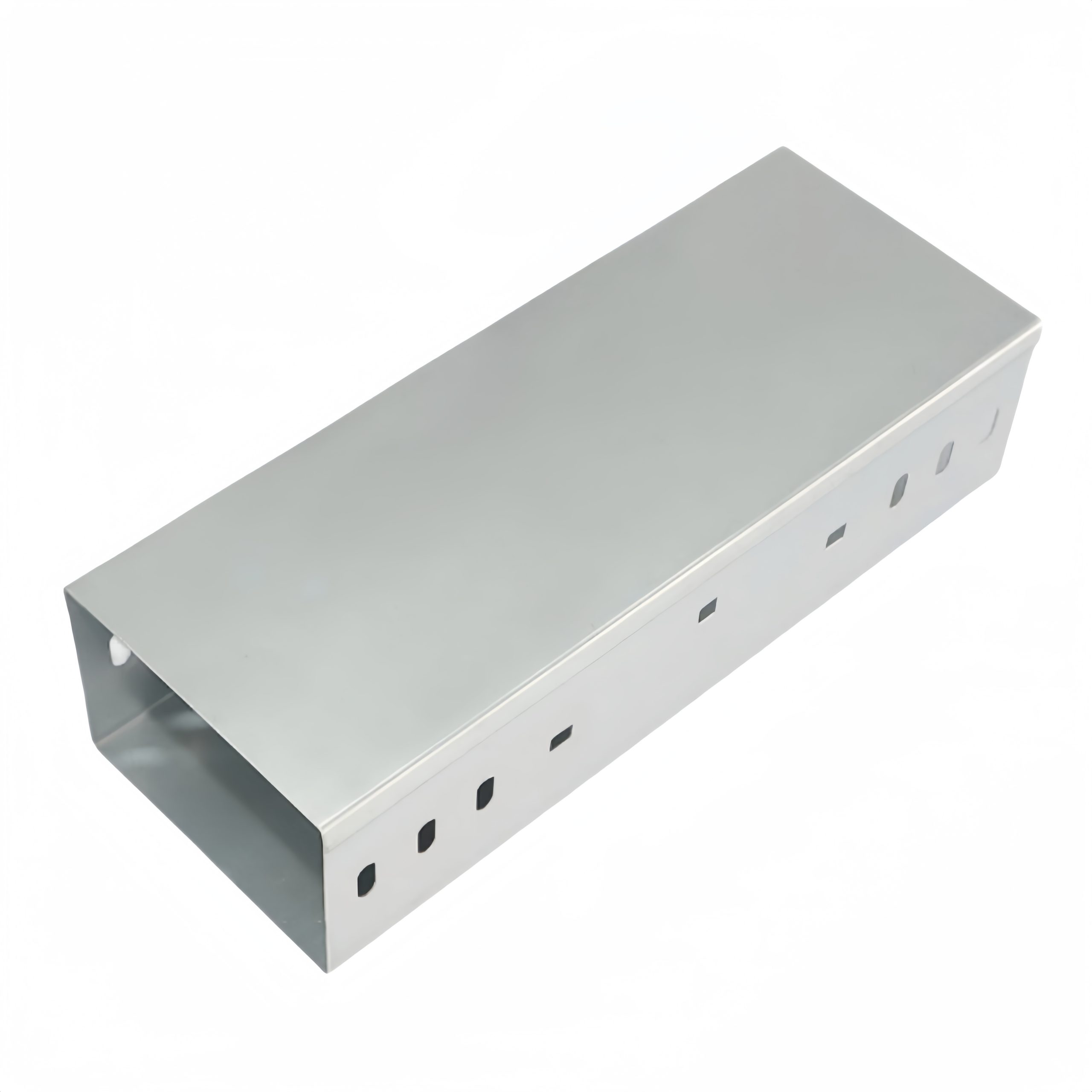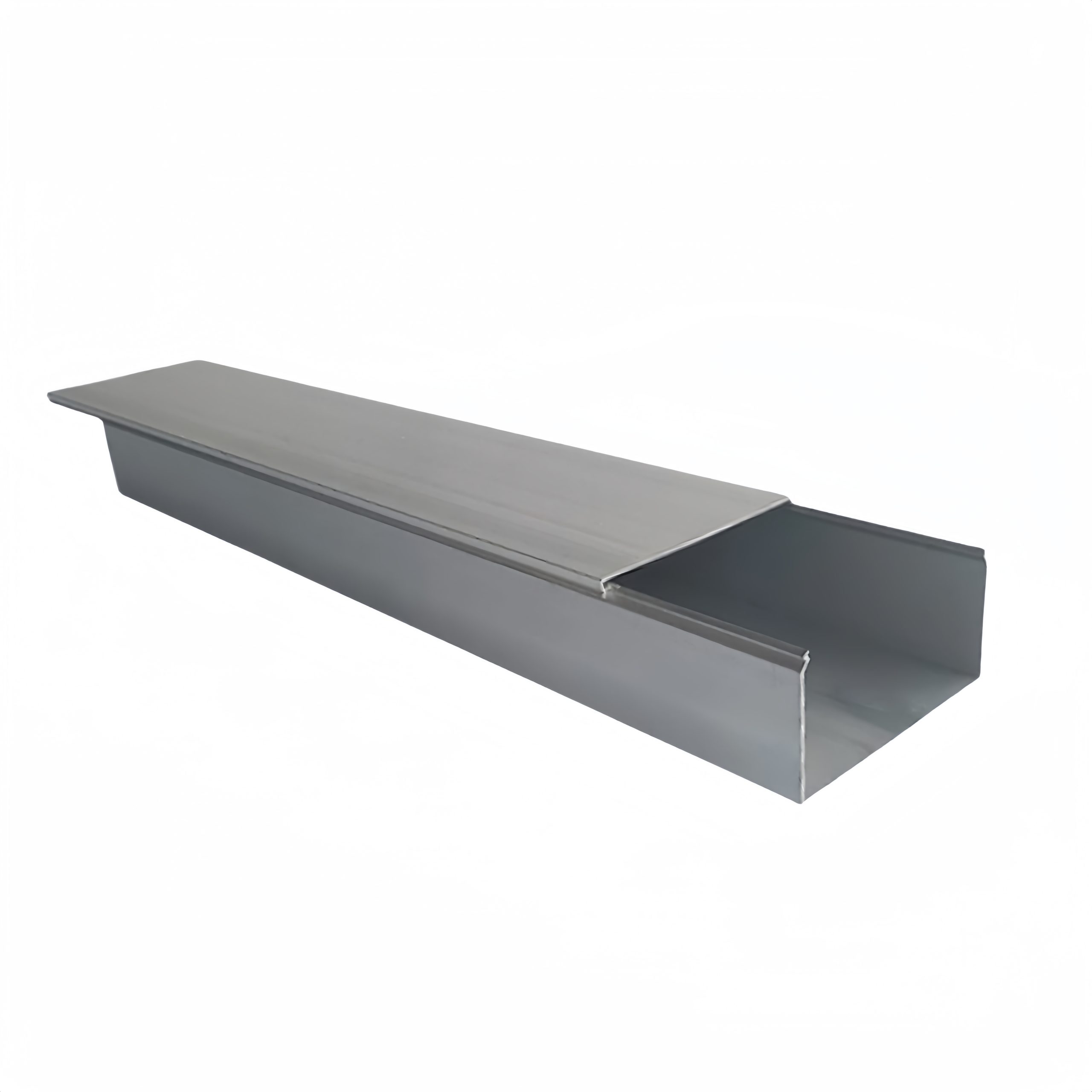Cable trunking systems are essential components of modern electrical installations, providing an organized and protected pathway for cables and wires to run through. They play a critical role in maintaining safety, aesthetics, and efficiency within buildings and infrastructure projects. The choice of materials used in cable trunking is crucial as it impacts their durability, fire resistance, chemical stability, and overall performance. This article delves into the various materials commonly employed in the manufacture of cable trunking systems and discusses their properties, advantages, and applications.

1. Metal Cable Trunking
Metal, especially steel and aluminum, is widely used in the fabrication of cable trunking due to its robustness and high mechanical strength.
Steel: Steel cable trunking is highly durable and can withstand heavy loads, making it suitable for industrial environments or areas with high foot traffic. Galvanized or powder-coated steel provides additional protection against corrosion, prolonging its lifespan. It also offers excellent fire resistance and electromagnetic shielding.
Aluminum: Aluminum cable trunking is lightweight yet strong, which makes installation easier and less labor-intensive. It is naturally resistant to corrosion and rust, ideal for outdoor or damp environments. Additionally, aluminum has good thermal conductivity, helping dissipate heat generated by cables, thus reducing the risk of overheating.
2. PVC (Polyvinyl Chloride) Cable Trunking
PVC is a popular material choice for cable trunking due to its affordability, ease of installation, and versatility. PVC trunking is non-conductive, flame-retardant, and resists chemicals, oils, and moisture, ensuring that cables remain safe and secure. It comes in various colors and can be surface-mounted or recessed, making it suitable for both domestic and commercial settings.
3. GRP (Glass Reinforced Polyester) Cable Trunking
GRP is a composite material known for its exceptional strength-to-weight ratio and resistance to corrosion, weathering, and chemicals. GRP cable trunking is often chosen for harsh environments such as offshore platforms, chemical plants, or coastal areas where metal may corrode. It is also electrically non-conductive, which adds another layer of safety to the system.
4. Polycarbonate Cable Trunking
Polycarbonate is a thermoplastic polymer that offers excellent impact resistance and toughness. It’s lightweight, easy to install, and transparent options allow for visual inspection of cables. This material is particularly useful when aesthetics or the ability to see internal wiring is important. Its fire resistance and wide temperature tolerance make it a versatile option for different applications.

5. Stainless Steel Cable Trunking
Stainless steel cable trunking provides superior corrosion resistance and hygiene properties, making it ideal for food processing plants, hospitals, and pharmaceutical facilities. It combines the strength and durability of steel with enhanced resistance to chemical attack and sterilization processes.
6. Hybrid Cable Trunking Systems
Some cable trunking systems use a combination of materials to exploit the best properties of each. For instance, metal trunking might have a PVC coating for increased chemical resistance or a hybrid design combining metal framing with a plastic cover for improved insulation and cost-effectiveness.
Conclusion
The selection of material for cable trunking depends on several factors including the environment it will be installed in, the type and quantity of cables being managed, and any specific regulatory requirements. Each material brings unique characteristics to the table, allowing engineers and contractors to choose the most suitable solution based on the project’s needs. Whether it’s the durability of metals, the versatility of plastics, or the specialized benefits of composites, these materials ensure that cable trunking systems provide reliable and efficient cable management throughout their service life.

